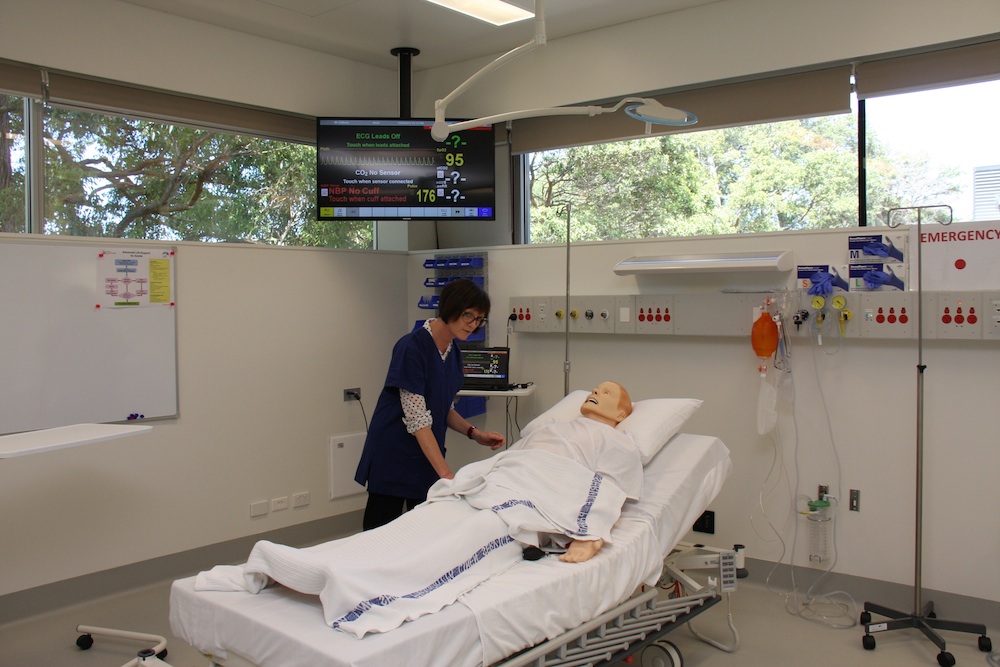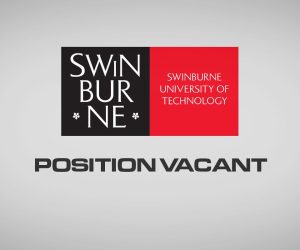
HEALTH SIM ALL ABOUT COMMUNICATION

Healthcare training is rapidly becoming a breeding ground for cutting edge (pardon the pun) AV. The question has always been: how do you best prepare clinicians for an emergency situation without actually putting a patient in danger? The current trend in healthcare training is immersive simulation, aided by specially integrated interactive mannequins, manipulated behind-the-scenes by clinical educators. This new breed of medical education tools can simulate heart attacks, bleeding, giving birth and even being operated on with striking realism. Teachers can make mannequins react suddenly to any actions performed by medical, nursing and allied health students, requiring an immediate and coordinated effort to save patients. It’s as close to a trauma situation as students can get before they start clinical practice.
The Simulation Learning Centre at The Sydney Adventist Hospital Clinical School of The University of Sydney is a facility that provides students with access to this vital technology. Barbara MacKenzie, IS Operations and Infrastructure Manager at Sydney Adventist Hospital, describes the Sim Lab as “a small ‘Big Brother’ studio. It’s set up with two simulation environments; one as a critical care ward, and one as an operating theatre. In the middle is a control room with one-way glass facing into both rooms. The clinical educator running the training scenario has been set up with what amounts to a stage management communication system.”
This is where ‘theatre’ and ‘operating theatre’ technology meet. During a training scenario, five students wear Shure ULX-D wireless bodypacks and lavalier microphones. Signals from these microphones are routed to BSS BLU Series DSP units, which perform mixing, echo cancelling and routing duties. These signals are fed to the control room, into video, recording and comms feeds. The educator gets a mix of all students, and all their audio is recorded, along with video, on an IP based video system, making the training scenario footage accessible for reference during the students debrief. This can also be streamed to a break-out room for their peers to watch in real-time.
In the simulation room, another educator referred to as the ‘confederate’ assists the control room educator by directing the scenario on the ground. The confederate and control room are linked via a Clear-Com HME DX210 wireless communications system, which also takes a feed from the BSS BLU mix. Using their Clear-Com HS15 and HS15-D headsets with integrated microphones, both educators can communicate with each other, speak through the ceiling speakers and even through the mannequins themselves. But why does a hospital teaching lab need to use such an enterprise-grade theatrical microphone and comms system?
“Having clear, good quality microphones is exceptionally important,” explained Wanda McDermott, Clinical Skills Educator at Sydney Adventist Hospital Clinical School. “When I teach, my students are expected to talk through and explain what they’re doing. The more they verbalise, the better their retention of the knowledge. When it comes to high-end simulation scenarios for registrars and anaesthetists, we really want to listen to the types of communication they’re using. We’re assessing the human factor in their decision-making process when looking after a critically unwell patient. It’s the communication between the team members that we’re really listening to because we’re fine-tuning their communication skills to learn how to keep on top of stress. If you can understand everything, you can debrief effectively. You lose your teaching ability if you can’t hear what’s being said. If it’s garbled, there’s no point.”
“The Shure ULX-D system has been so successful we want to double the number of mics,” added MacKenzie. “The technology completely supports the teaching methodology and is absolutely critical to the functioning of the centre. We also have a special interest in IP based technologies, and the Shure ULX-D’s visibility across the network for management is a key factor for us.”
A forward-thinking campus, Sydney Adventist Hospital has adopted a ‘Future Proof’ philosophy to all technical systems deployment. But this is not just about having the latest or most fashionable equipment; the thinking is much longer term. “To me, ‘Future Proof’ is about the partnership,” MacKenzie elaborated. “The way we work as an enterprise is to develop partnerships and standards, rather than just transactionally shopping for product. Jands is a distributor whose stable of products is tier one in the AV industry. We as a hospital can gain a lot of benefit from having a direct relationship with them delivered via an integrator and consultant.”
“The technology solution we have implemented in the SIM Centre started with a concept brief from consultants WSP Group,” MacKenzie continued. “We worked through this iteratively with the end users, the equipment distributors and systems integrator Fredon. Fredon have been fantastic, and we appreciate their ongoing support. The facility has been funded by both private and government funds, including generous in-kind support from Jands. The really great achievement here is how the technology implementation directly enhances the learning experience and the teaching outcomes for the students.”















RESPONSES